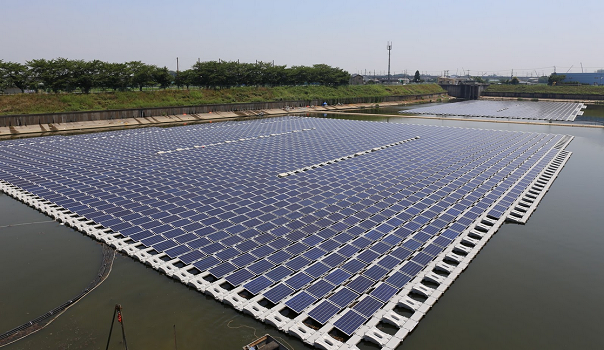
Floating solar installations - are they worth it?
Floating solar, also known as floating photovoltaic (FPV), is any sort of solar array that floats on top of a body of water.
How does floating solar work?
The floating frame is made up of HDPE-based plastic.which are linked together into a mat, where each float supports one solar panel and you have an interlinked series of floating pads where remaining solar panels can be fit.
There is an anchoring system that anchors to the shore from the floating structure. shore mounts are done so that system will be anchored to the shore line so it doesn’t move and there are walkways on the floating structure so that it would be easier for installing and maintenance of solar panels.
How is wiring done on floating solar pv system?
Inverters are located on the shore side, identical to a normal ground-mount system. Marine-grade submersible cable are used to send wires from solar panels to the inverter. All the components we are using are rated for a marine environment.
Structure

How is wiring done on a floating solar pv system?
Inverters are located on the shore side, identical to a normal ground-mount system. Marine-grade submersible cable are used to send wires from solar panels to the inverter. All the components we are using are rated for a marine environment.
Area preferred for installing floating solar pv system:
It is preferred to be installed on lakes, ponds because the waters are generally calmer than the ocean. It’s also common to install floating solar structures on large, man-made bodies of water, such as reservoirs, open water storage takes at farms etc. Even floating solar panels can be installed on rivers but it is slightly risky due to the occurrence of floods during rainy season.
Advantages and disadvantages:
Advantages:
- No loss of valuable land space:
One of the biggest advantages of floating solar panels is that the installations do not require valuable land space. Many of these installations can take up unused space on bodies of water, such as hydroelectric dam reservoirs, wastewater treatment ponds, or drinking water reservoirs.
- Environmental benefits:
Floating solar panels can certainly play a role in contributing to healthier environments. With floating solar installations, water not only has a cooling effect on solar equipment: it works the other way as well.
The floating solar panel structure shades the body of water and reduces evaporation from these ponds, reservoirs, and lakes. This is a particularly useful in areas which results in drought, as water loss to evaporation can add up over time and contribute to a shortage.
The shade provided by these floating solar also help reduce the presence of algae blooms in bodies of fresh water. Algae blooms can be dangerous for human health if they occur in a source of drinking water, and can also lead to the death of plants and animals living in the body of water.
Disadvantages:
- Cost:
Floating solar installations may require additional costs than more traditional types of solar panel installations. Because this is a relatively new technology that requires specialized equipment and more installation knowledge, it typically requires a higher price tag than installing similar-sized solar farms on rooftops or solid ground. But as with traditional solar panel systems, the costs of installing floating solar panels are expected to continue to drop as the technology advances.
Floating solar pv project:
- The first and largest floating solar project in the country on the Banasura Sagar Dam at Padinjarathara in Wayanad has set a model in utilising non-conventional energy sources to tackle power crisis.The project, under the Kerala State Electricity Board (KSEB), was commissioned in December 2017.